The Bloody Biography of Change
By all accounts, India is not a factor in the election. Is this because the consensus on India is so strong across Pakistan’s political divides that no party gets extra mileage by wrapping the flag around itself?
 TCA Raghavan
TCA Raghavan
 TCA Raghavan
TCA Raghavan
 |
19 Jul, 2018
|
19 Jul, 2018
/wp-content/uploads/2018/07/Bloodybiography1.jpg)
How do we contextualise the current election in Pakistan in terms of its history? The abiding memory of the partition of India and the creation of Pakistan is of its chaos and violence: communal massacres, ethnic cleansing and refugees in the millions. Yet, for its protagonists, it was a democratic process—through two elections: the 1945 election to the Central Legislature and to elect a Constituent Assembly and the 1946 one to provincial assemblies—that more than anything else brought Pakistan into being. Through these polls, the Muslim League demonstrated convincingly that apart from street and rally power, it also had an all-India presence and was a political force in Punjab and Bengal.
In the 1945 election, the Muslim League won all seats reserved for Muslims in British India. Of the total 109 seats in the Central Legislature, the Congress won 59 and the Muslim League, 39. If this vindicated Muhammad Ali Jinnah’s claims of representing the Muslims of India more than anyone else, further confirmation came with the results of the provincial elections, in which the majority of Muslim seats went to the Muslim League. The 1946 election also threw up other paradoxes. In the predominantly Muslim North West Frontier Province, it was the Congress that won convincingly and formed a government there, much to the embarrassment of the protagonists of the idea of Pakistan. Complicated politics and British imperial strategy led to a province- wide referendum in which Pashtuns had to choose between India and Pakistan. This was boycotted by Badshah Khan when his demand for a third option of independence (or ‘Pashtunistan’) was turned down. The Province then voted for Pakistan, but the boycott meant a fissure in the idea of Pakistan from the very beginning. Nevertheless, in the rest of British India, the Muslim League came out with a strong showing in the 1945 election and then in the provincial elections of Punjab and Bengal. This meant in essence that the context in which negotiations were underway for the transfer of power to Indians and the interface between the Congress and the Muslim League had changed completely.
Yet, one takeaway from this is that electoral results are often not the best indication of a political process. For all the Muslim League’s popularity in the aftermath of 1947 for the creation of a new country, the people of Pakistan had to wait for a full quarter century after 1945 to vote in a general election, and this took place in 1970.
The absence of national-level direct general elections did not of course mean the absence of politics from 1947 to 1970. There was a celebrated provincial election in East Pakistan in 1954, which was significant because it saw the decimation of the All India Muslim League at the hands of a pan-Bengali front. Federal issues thereafter loomed large in Pakistan’s politics—in particular what to do about East Pakistan, the majority province in the country. Then in 1965, there was a presidential election which saw Field Marshal Ayub Khan being opposed by Fatima Jinnah, Muhammad Ali Jinnah’s sister, who had the combined opposition’s support. The elections were indirect, the electoral college consisting of 80,000 ‘basic democrats’. Ayub Khan won, convincingly on the face of it, but the encounter had been a bruising one for him and it inaugurated a downward trend accentuated by the 1965 war with India.
Ayub Khan was replaced by another general, Yahya Khan, who presided over what was Pakistan’s first real general election with universal suffrage. This was therefore quite different from the 1945 and 1946 elections, which had very limited electoral colleges. Its result exposed an East-West divide that no legal or constitutional engineering could now paper over. The 1970 election saw the Awami League win all but two seats in East Pakistan, enough to form a government at the Central level. The refusal of West Pakistan’s political class and establishment to accept this result led to the end of the Pakistan that had come into being in 1947. Paradoxically, thus, if the last elections of British India in 1945 and 1946 with their limited electorates had led to the break-up of India, Pakistan’s first national-level election in 1970 with universal suffrage led to its break-up and the creation of Bangladesh.
The past decade, and especially the period 2008-2014, was one in which the dogs of war were unleashed in Pakistan
The next election in 1977 was equally traumatic. There were widespread allegations of rigging and the results were abortive. No new government could be formed because of opposition protests, and the final act was a military coup under General Muhammad Zia-ul-Haq, the jailing of Zulfikar Ali Bhutto and the latter’s execution in 1979. Pakistan would have to wait till 1988 before another election and this happened only after General Zia’s death in a mysterious air crash.
In the two decades between the death of General Zia and the political end of General Musharraf in 2008, Pakistan witnessed six general elections (1988,1990, 1993, 1997, 2002 and 2008), one coup (1999) and one referendum (2000). Questions were raised over the integrity of each election except the last. The elections resulted in eight prime ministers (more if caretakers and those who held charge briefly are included). Between 1988 and 1997, Benazir Bhutto and Nawaz Sharif both took charge as prime minister twice, but neither could complete a full term. Benazir Bhutto’s two tenures (1988-90 and 1993-97) and Nawaz Sharif’s first (1990-93) ended because their corruption and misgovernance came up against a phalanx of vested interests even more malfeasant than the order they sought to replace. Suspicions—real or imagined—of the military played their own role in ending each of these tenures prematurely.
Each was followed by an election. Nawaz Sharif’s second tenure, however, ended far more dramatically in 1999 as his hasty and unprepared moves against the chief of army staff, naively relying on his constitutional powers rather than his political instincts, led to his toppling in a coup, imprisonment and then exile. That the Kargil conflict was the backdrop against which this intense civil-military duel took place illuminated the triangle that exists between Pakistan’s democracy, the brooding presence of its army, and India. Incidentally, most of the information against Nawaz Sharif which is now doing the rounds of different courts in Pakistan was gathered in the immediate post-coup period. General Musharraf needed to nail the deposed prime minister and the spectacular growth in his family’s fortunes was the obvious front to focus on. Regardless of the truth of the corruption allegations against Nawaz Sharif, virtually none of this information has evidential value as it was gathered by intelligence agencies and relied essentially on confessions extracted from former associates through simple blackmail or deals.
This potted history of Pakistani politics is worth recalling, if only to underline the unusual quality of the past decade in its political history. The country is poised for its third political transition as a result of an electoral process after the earlier elected government completed its full term. Some would argue that this phase is even longer, since during 2002-07 there was a civilian façade to General Musharraf’s military dictatorship and there was a smooth transition following the election in 2008 too. In any event, very clearly, at least some of the traumas associated with past elections and elected governments are now no more than history. Whichever year one takes as the beginning, the fact remains that Pakistan is currently in the longest uninterrupted period of civilian rule in its history.
The past decade has seen the exorcism of some ghosts. The country’s 18th Constitutional Amendment provided provinces a hefty chunk of autonomy, and in the process strengthened the federal structure—significant in the context of the restiveness in Baluchistan since 2005. Giving that province’s notables a larger share of the cake has weakened fissiparous forces that had never really been dormant since the 1950s. Another ghost exorcised, substantially if not wholly, was that of Pashtun separatism, effectively dealt with by combining substantial devolution of powers with optically powerful moves, such as renaming the old NWFP province as Khyber Pakhtunkhwa, Peshawar’s international airport after the great but much persecuted Bacha Khan, etcetera. The inclusion of the Federally Administered Tribal Areas and ending of a colonial anachronism is a more recent example of Pakistan’s political process moving in a creative and positive way to address deep-rooted and structural problems.
Nawaz Sharif’s return to face arrest is an act of courage and has a flavour of defiance that has usually been missing in Pakistan and which characterises politics in India
But more than anything else, the past decade, and especially the period 2008-2014, was one in which the dogs of war were unleashed in Pakistan. Terrorist attacks through its length and breadth threatened state stability and public morale to an extent not entirely understood by the outside world. That much of this was the result of Pakistan’s own acts of commission led to a large dose of schadenfreude and the sentiment among outsiders that ‘it serves Pakistan right’. In retrospect, it is fair to imagine this period as Pakistan’s gravest crisis since the break-up of 1971.
Many in Pakistan wonder how democracy survived through this period at all. The more discerning, but only a thin minority, occasionally have the confidence to say that perhaps Pakistan was able to come through this period only because there was a democratic process in place. The credit for ending the nightmare of 2008-14 has largely gone to the military, both from Pakistanis and outsiders. It is nevertheless a counterfactual well worth posing whether the scale of military power used in 2015 and 2016 within Pakistan was possible and sustainable without the active agreement of the political class.
Yet, for all this, Pakistan has, since Nawaz Sharif’s ouster in mid 2017, been in the territory of déjà vu. The details of the process by which his and his party’s marginalisation is taking place are less important—and tediously repetitive in any reading of Pakistan’s history—than the fact that such a process is underway. That these efforts may succeed is possible, indeed is likely, but the extent of success remains uncertain and that is what the forthcoming election in Pakistan is about. What is also significant is that the question— of the extent of success in marginalising Nawaz Sharif and his party—is itself being posed. That it has remained an open one is a sign of change in itself. Managed referendums to legitimise coups are evidently history now, and legitimacy can only follow if at least some ingredients of a free and fair poll exist.
Is this election different? One difference that does stand out is the indeterminacy of the outcome. In 2008, the victory of the Pakistan People’s Party, at least in terms of being the single largest party, had almost a retrospective inevitability to it, especially after the assassination of Benazir Bhutto in December 2007. In 2013, similarly, it was abundantly clear that the next government would be formed by Nawaz Sharif’s party and the final result was not a surprise to anyone except perhaps Imran Khan. This time round, the picture is much more blurred even if we begin with the assumption that no single party may get a majority on its own. The other point of interest is to see how radical Islamists perform and whether there is going to be a change in the historical pattern in Pakistan so far. This has been that for all their spit and thunder, extremists do not fare well in elections. In case the radical Islamists of different hues in the fray perform well or better than in the past, it would suggest that the Pakistan Army’s political and social engineering skills have advanced, its policy of mainstreaming terrorists is working and is more than just a tactic for muddying the prospects of politicians it does not like.
In one aspect, this election is no different from others over the past two decades. By all accounts, India is not a factor in it. Is this because the consensus on India is so strong across Pakistan’s political divides that no party gets extra mileage by wrapping the flag around itself? Or can it be that the political class sees no advantage in expending energy on an issue that will remain closely guarded by the military as its preserve? There are however other explanations, or half explanations. Not least among these is a change in the psyche of a large swathe of an electorate exhausted by the conflict that Pakistan has undergone in the past two decades.
But most of all, this election has acquired a dramatic quality because of the chain of events surrounding Nawaz Sharif. His return to face arrest is an act of courage and has a flavour of defiance that has usually been missing in Pakistan and which characterises politics in India to a large extent. It is reminiscent in many ways of Benazir Bhutto’s campaign in 2007, when she insisted on leading from the front, notwithstanding the grave threats she faced and which ultimately felled her. It is reminiscent also of the chief justice who refused to buckle and took his protest to the street and saw the end of General Musharraf. Not that either of them were without flaws, and their detractors made much of these—then and now. But by refusing to be pushed around, they pushed Pakistan further into the grey zone of change. We have to see whether the drama Nawaz Sharif has injected into this election does that again.
Also Read
Imran Khan and the Struggle for a New Pakistan ~ by Mehr Tarar
Sex, drugs and Rock ‘n’ Roll ~ by Nandini Nair

/wp-content/uploads/2025/05/Cover-AfterPahalgam.jpg)





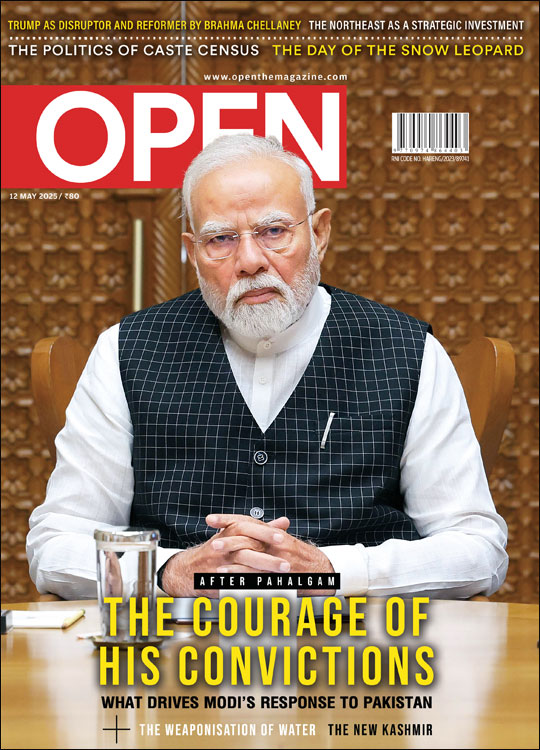
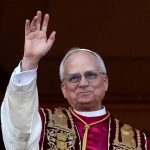
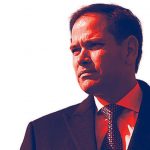
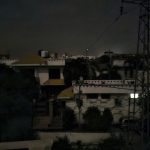
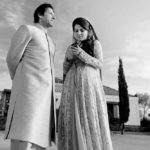


More Columns
he Logic of Grace: On the Election of Pope Leo XIV Open
Rubio asks India, Pak to de-escalate but asks Sharif to stop support to terrorism Rajeev Deshpande
Pakistan Launches Another Wave of Attacks on India Open